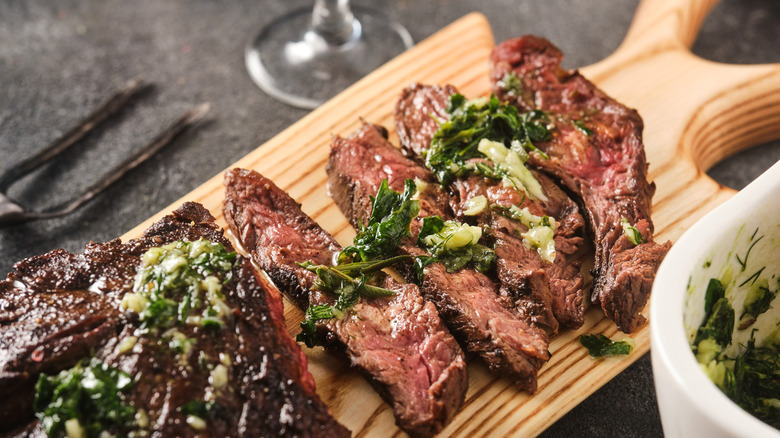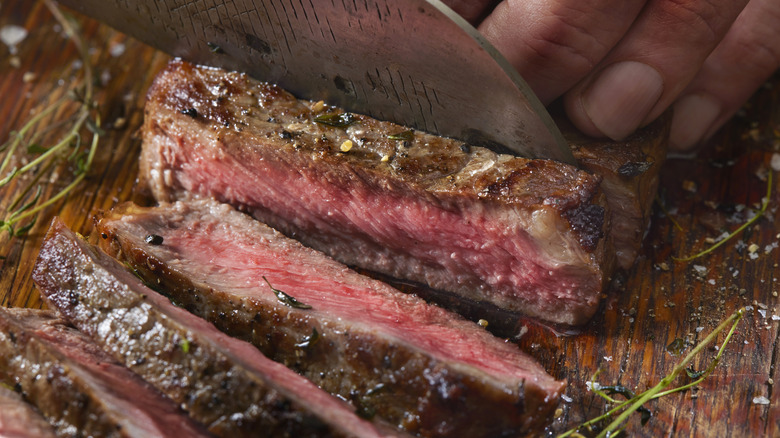If You Want The Most Tender Steak, You Need To Cook It Slow
To cook the most tender steak, you have two choices. One is to purchase a filet mignon, which is widely regarded as the most tender cut of steak. Sprinkle generously with salt, let it come to room temperature, then sear while basting with butter before finishing to your desired wellness in a hot oven. The wrinkle, however, is that filet mignon is one of the most expensive cuts of steak – and widely dissed by chefs who feel it lacks flavor compared with more affordable cuts.
That, of course, brings us to your other and arguably better option. For the most tender steak without sacrificing the meatier flavor for which many less fancy cuts are known, bring home the affordable steak of your choice and cook it slow — preferably using a moist, low-heat method such as a slow cooker.
Cooking slowly using moist, low heat affords adequate time for the high collagen content in tougher but more flavorful cuts to melt into gelatin. This has the effect of tenderizing and infusing the remaining flesh with a fuller flavor and a rich, and silky mouthfeel. Although collagen begins to melt at a mere 160 degrees Fahrenheit, it can take hours for all of it to render. Doing so at a steady, low temperature in a moist atmosphere ensures even and thorough cooking without overcooking and thereby drying out the meat.
Pro tips for slow cooked steak
The best cuts of steak for slow cooking tend not to be the leaner cuts like filet mignon, tenderloin, and sirloin because without heavy marbling, the lengthy cooking time, even at low heat, will render them dry and tough. One notable exception is rump roast because, while quite lean, it also contains an impressive quantity of collagen. And as discussed above, collagen does a lot of work during slow cooking toward developing a tender bite. In addition, the moisture retained in your slow cooking vessel, which helps prevent the collagen from cooking down after it's melted, allows the steak to continue to bathe in it for as long as it cooks.
Accordingly, if you're planning to cook a steak slow, you'll want to be on the lookout for cuts rich in collagen like brisket, round, and chuck. You'll also want to look for thicker cuts of meat as these tend to stand up best to low, slow cooking.
If you were to braise your steak in the oven, you'd want to set the temperature to slightly higher than the melting point of collagen. But you'd want to keep a thermometer in the meat so as to remove it from the oven once it reaches 203 degrees Fahrenheit – the ideal temperature for meat tenderization. But if you set your slow cooker to low, it will cook your steak at precisely that temperature. And who doesn't love a set and forget supper?

